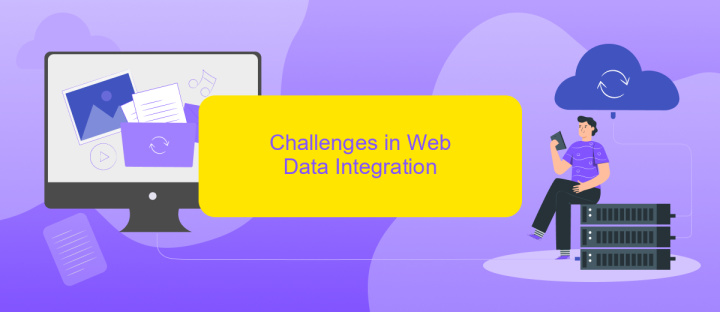Web Data Integration
Web Data Integration (WDI) is a crucial process in the digital age, enabling businesses to seamlessly collect, aggregate, and analyze data from diverse web sources. By leveraging advanced technologies and methodologies, WDI empowers organizations to gain valuable insights, streamline operations, and make data-driven decisions. This article explores the fundamentals, benefits, and best practices of Web Data Integration.
Introduction
Web Data Integration (WDI) is a critical process for organizations aiming to consolidate data from multiple web sources into a cohesive and usable format. This process enables businesses to make data-driven decisions, improve operational efficiency, and enhance customer experiences. The growing complexity and volume of web data necessitate the use of sophisticated tools and services to streamline integration efforts.
- Automated data extraction and transformation
- Real-time data synchronization
- Scalability to handle large datasets
- Compatibility with various data formats and sources
One such tool that facilitates seamless web data integration is ApiX-Drive. This service offers a user-friendly interface for setting up integrations between different web applications without requiring extensive technical expertise. ApiX-Drive supports a wide range of platforms and provides automated workflows to ensure that data is consistently and accurately integrated. Utilizing such services can significantly reduce the time and effort involved in web data integration, allowing organizations to focus on leveraging the integrated data for strategic initiatives.
Why Web Data Integration?

Web Data Integration is crucial for modern businesses as it allows for the seamless aggregation and analysis of data from various online sources. This process enables companies to make more informed decisions, improve operational efficiency, and gain a competitive edge. By integrating web data, businesses can automate workflows, reduce manual data entry errors, and ensure that they have access to real-time information, which is vital for strategic planning and execution.
One of the tools that facilitate effective web data integration is ApiX-Drive. This service allows businesses to connect multiple web applications and automate data transfer between them without requiring any coding skills. ApiX-Drive supports a wide range of integrations, making it easier to synchronize data across different platforms. By leveraging such services, companies can streamline their operations, save time, and focus on their core activities while ensuring that they are always working with the most up-to-date information.
Challenges in Web Data Integration

Web data integration presents a multitude of challenges that can complicate the process of aggregating and harmonizing data from various online sources. These challenges often stem from the diversity and complexity of web data formats, the dynamic nature of web content, and the need for real-time data updates.
- Data Heterogeneity: Web data comes in various formats such as HTML, JSON, XML, and CSV, making it difficult to standardize and integrate.
- Data Quality: Inconsistent, incomplete, or inaccurate data can significantly affect the reliability of integrated datasets.
- Scalability: Handling large volumes of data efficiently requires robust infrastructure and sophisticated algorithms.
- Real-Time Integration: Keeping data up-to-date in real-time is essential but challenging due to the continuous changes in web content.
- API Limitations: Many web services impose rate limits and access restrictions on their APIs, complicating data extraction.
To address these issues, tools like ApiX-Drive can be invaluable. ApiX-Drive simplifies the integration process by providing a user-friendly interface to connect various web services and automate data workflows, thus mitigating the complexities involved in web data integration.
Methods for Web Data Integration

Web data integration involves combining data from different sources to provide a unified view. This process is essential for businesses to make informed decisions based on comprehensive data analysis. Various methods are employed to achieve effective web data integration.
One common method is web scraping, which involves extracting data from websites using automated tools. Another approach is the use of APIs (Application Programming Interfaces) to fetch data directly from web services. Additionally, data integration platforms like ApiX-Drive can simplify the process by offering pre-built connectors and automation workflows.
- Web Scraping: Extracting data from web pages using bots.
- APIs: Fetching data directly from web services.
- Data Integration Platforms: Using tools like ApiX-Drive for seamless integration.
Each method has its own set of advantages and challenges. Web scraping can be powerful but may face legal and technical hurdles. APIs provide structured data but require proper authentication. Data integration platforms like ApiX-Drive offer ease of use and flexibility, making them ideal for businesses looking to streamline their data integration processes.
- Automate the work of an online store or landing
- Empower through integration
- Don't spend money on programmers and integrators
- Save time by automating routine tasks
Applications of Web Data Integration
Web Data Integration is a crucial process for businesses aiming to consolidate data from various online sources into a unified system. This integration enables seamless data flow, ensuring that organizations have access to real-time information for better decision-making. Applications of web data integration span across different sectors, including e-commerce, where it helps in aggregating product information from multiple suppliers, and finance, where it aids in consolidating market data for analysis. By integrating data from social media, companies can also monitor brand sentiment and customer feedback efficiently.
Moreover, web data integration is essential for automating workflows and improving operational efficiency. Services like ApiX-Drive facilitate this process by providing tools to easily connect and synchronize data across various web applications without the need for extensive coding. For instance, businesses can integrate their CRM systems with email marketing platforms to ensure customer data is always up-to-date. This not only saves time but also enhances the accuracy of data, leading to more effective marketing strategies and improved customer relations.
FAQ
What is Web Data Integration?
Why is Web Data Integration important for businesses?
How can I automate Web Data Integration?
What are the challenges associated with Web Data Integration?
How can I ensure data quality in Web Data Integration?
Time is the most valuable resource in today's business realities. By eliminating the routine from work processes, you will get more opportunities to implement the most daring plans and ideas. Choose – you can continue to waste time, money and nerves on inefficient solutions, or you can use ApiX-Drive, automating work processes and achieving results with minimal investment of money, effort and human resources.


